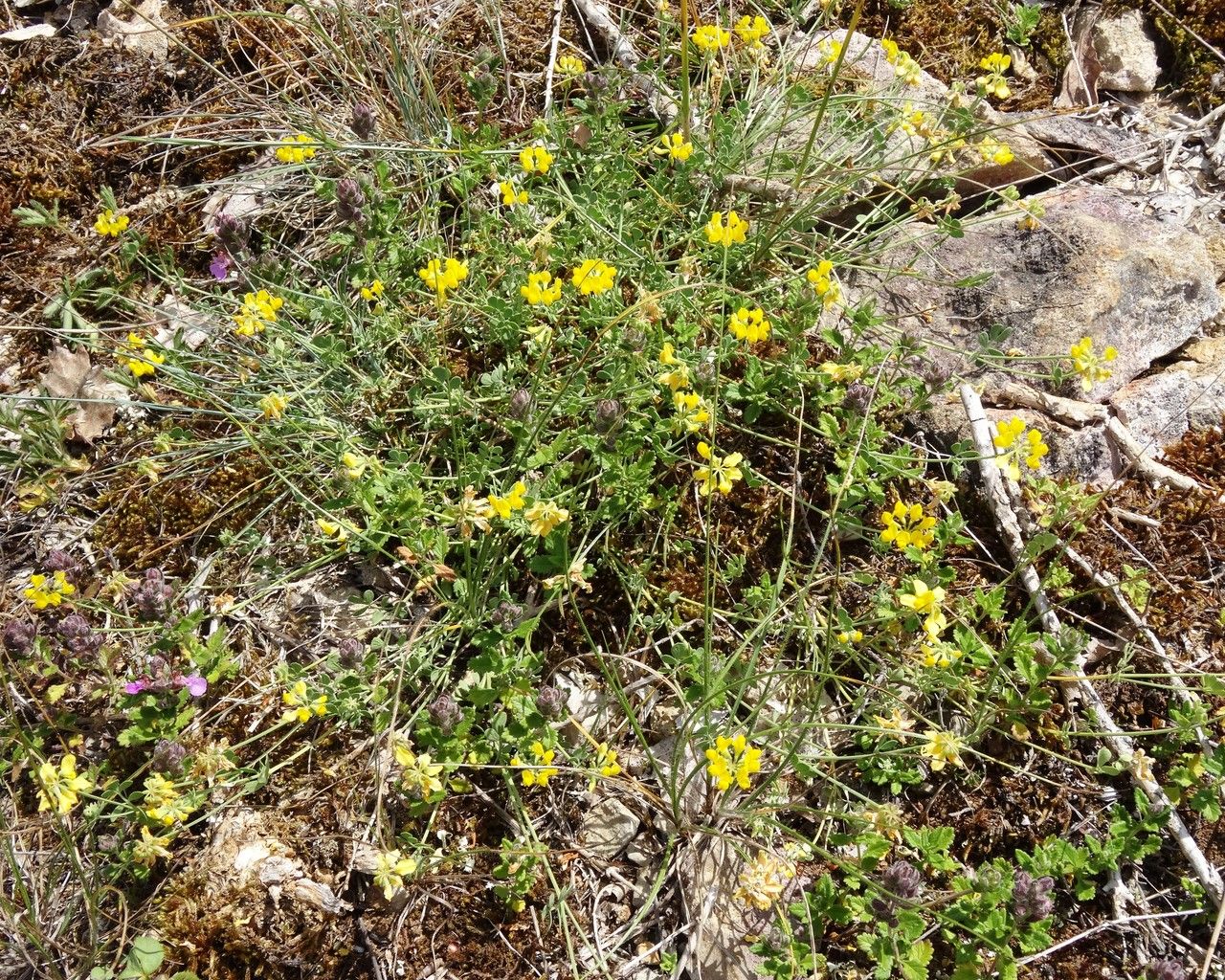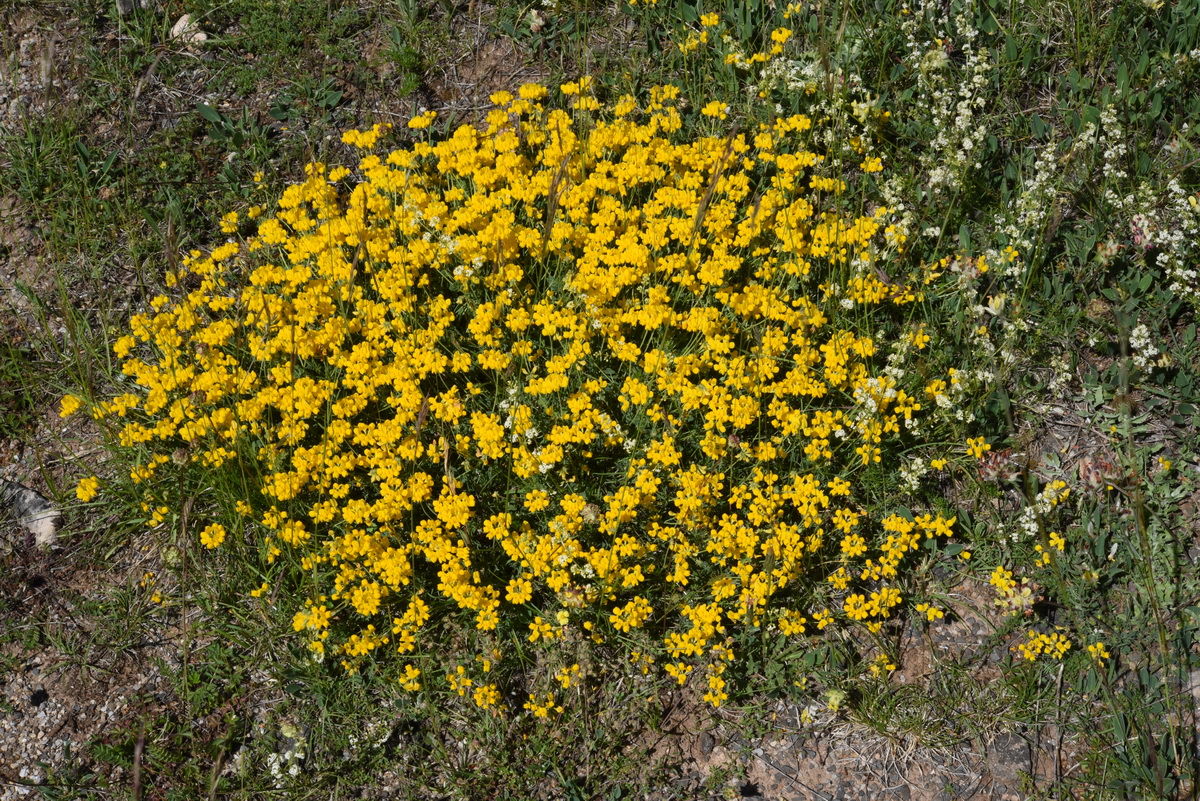Small Crown
coronilla minima
Also known as: []
Overview
A small, low-growing perennial herb in the pea family, native to Mediterranean regions.
Benefits & Perks
["drought tolerant","wildlife attractant (bees, butterflies, birds)"]
Botanical Classification
| Phylum: | Magnoliophyta |
| Class: | Magnoliopsida |
| Order: | Fabales |
| Family: | Fabaceae |
| Genus: | Coronilla |
| Botanical Name: | Coronilla minima |
Plant Characteristics
Basic Information
- Category: Herbs & Weeds
- Suitable Location: rock gardens, sunny borders, or containers in full sun
- Suitable For:
- Is Weed: No
- Allergenicity: low
Environmental Needs
- Climate: {"temperatureRange":"5–35°C"}
- Hardiness: {"zones":"7–9"}
- Misting: rarely required, only if ambient humidity is very low
- Drainage: Fast-draining to prevent waterlogging.
- Soil Type: Well-draining, sandy loam with some organic matter.
Maintenance Level
- Maintenance Level: low
- Toughness Level: moderate
- Pruning Frequency: Annually in late winter or early spring before new growth begins.
- Pruning Intensity: Moderate; remove up to one-third of the plant if overgrown.
Care Details
Ideal Sunlight Coverage:
Full sun (6–8 hours/day) with tolerance for intense light; adjust for extreme heat by providing partial shade.
Sunlight Tolerance Tips:
Acclimate gradually to intense sunlight; avoid sudden exposure to prevent scorching; place in the brightest location possible indoors.
Care Requirements
Care Difficulty
easymoderate
Sunlight
full sun to partial shade
Maximize light exposure; rotate plant for even growth; use reflective surfaces to enhance light.
Watering
every 7–10 days during active growth, reduce in winter
Water deeply but infrequently; avoid waterlogged soil; ensure good drainage.
Soil
well-drained, sandy or loamy soil
pH: Slightly alkaline (pH 7.0–7.5).
Ensure soil dries between waterings; avoid heavy clay soils; amend with grit if needed.
Temperature
Prefers warm temperatures (65–85°F / 18–29°C); tolerates mild frosts but thrives in warmth.
Protect from frost; avoid sudden temperature swings; maintain consistent warmth.
Fertilizing
every 4–6 weeks during spring and summer
Use low-nitrogen fertilizer; fertilize only when actively growing; flush soil occasionally to prevent buildup.
Propagation
Methods
Stem cuttings or division; stem cuttings are more common for home growers.
Step-by-Step Propagation Guide
- Take a healthy cutting.
- Apply rooting hormone.
- Plant in medium.
- Maintain humidity.
- Wait for roots.
Best Time: Spring or early summer when the plant is actively growing.
Environment
Warm (70–75°F / 21–24°C), high humidity (60–70%), and bright indirect light.
Medium
Well-draining mix of perlite and peat moss or cactus/succulent soil.
Hormone
Recommended to use rooting hormone for faster and more reliable rooting.
Timeline
Roots typically form in 3–6 weeks; establishment may take 2–3 months.
Tools Needed
Pruning shears, rooting hormone, small pots, humidity dome or plastic bag.
Quick Tips
Use healthy, non-flowering stems; keep medium consistently moist; provide bottom heat if possible.
Pruning & Repotting
Pruning Guide
Method
Selective thinning and heading back to promote branching.
Pruning Plan
Prune to maintain shape, encourage bushiness, and remove dead or weak growth.
Tools
Pruning shears, sterilizing solution, gloves.
Checklist
Sterilize tools; prune dead/weak growth; shape plant; clean up debris.
Repotting Guide
Best Season
Spring, when the plant is entering its active growth phase.
Pot Size
Increase pot size by 1–2 inches (2.5–5 cm) in diameter.
Method
Remove plant gently; trim roots if needed; repot in fresh, well-draining soil; ensure proper drainage.
Suggestions
Repot every 2–3 years or when roots fill the pot; beneficial for growth and soil health.
Checklist
Check root bound status; prepare new pot; use fresh soil; water lightly after repotting.
Advanced Care Tips
Watering Mastery
Watering Checklist
Check soil dryness; water deeply; ensure drainage; adjust for season.
How to Apply Water Properly
Water directly at the root zone until water drains from the bottom, ensuring even moisture without saturation. Water in the morning to allow foliage to dry.
Watering Schedule Tips
Water sparingly, allowing soil to dry completely between waterings. Reduce frequency in winter to once every 4–6 weeks, depending on conditions.
Soil Improvement
Add perlite or coarse sand to improve drainage; incorporate compost for fertility.
Temperature Stress Management
Signs of Temperature Issues
Wilting, leaf drop, or cessation of growth in cold; scorching or stunted growth in excessive heat.
Cold Stress
Slows growth, may cause leaf drop, and can lead to root rot if soil remains wet in cold.
Solution: Move to a warmer location; protect from drafts; ensure soil dries fully between waterings.
Hot Stress
Leaves may scorch, growth may slow, and water demand increases.
Solution: Provide partial shade during peak heat; increase watering frequency; ensure good air circulation.
Fertilizing Guide
Fertilizing Checklist
Check growth phase; dilute fertilizer; apply to moist soil; avoid winter feeding.
Fertilizing Method
Use a balanced, water-soluble fertilizer diluted to half strength every 4–6 weeks during growing season (spring/summer); avoid fertilizing in winter.
Common Problems & Solutions
Toxicity Warning
Cats
Slightly ToxicCats that ingest parts of Coronilla minima may experience mild gastrointestinal symptoms. The toxic effects are generally not severe but can cause discomfort.
⚠️ Symptoms:
🌿 Toxic Parts:
⚡ Toxic If:
if eaten
Dogs
Slightly ToxicIngestion of Coronilla minima by dogs can lead to mild gastrointestinal upset. The toxic compounds primarily affect the digestive tract.
⚠️ Symptoms:
🌿 Toxic Parts:
⚡ Toxic If:
if eaten
Humans
Slightly ToxicCoronilla minima contains compounds that can cause mild gastrointestinal distress and other mild symptoms upon ingestion. The physiological impact is generally limited to the digestive system.
⚠️ Symptoms:
🌿 Toxic Parts:
⚡ Toxic If:
if eaten
Frequently Asked Questions
Q: Is Coronilla minima suitable for rock gardens?
A: Yes, its drought tolerance and low-growing habit make it well-suited for rock gardens.
Q: Does Coronilla minima require frequent watering?
A: No, it is drought-tolerant and prefers well-drained soil with minimal watering.
Q: Does Coronilla minima attract pollinators?
A: Yes, it is known to attract bees, butterflies, and other pollinators.
Quick Reference
| Family: | Fabaceae |
| Care: | easy |
| Light: | full sun to partial shade |
| Water: | every 7–10 days during activ |
Get Expert Care Tips
Download the Plantious app for personalized care reminders and plant identification!
Google Play App Store







